Toilet Types
What Are the Pieces in the Toilet Tank Called

Are you ever curious about what lies beneath the porcelain throne? Well, fear not, fellow bathroom enthusiasts! We are here to enlighten you on the mysterious inner workings of the toilet tank.
In this concise and informative article, we will delve into the world of fill valves, flappers, flush handles, overflow tubes, and float valves.
So, if you desire to master the art of toilet knowledge, keep reading and prepare to be amazed!
Key Takeaways
- The fill valve regulates the water level in the toilet tank and can cause issues such as slow filling or constant running.
- The flapper controls the flow of water from the tank into the toilet bowl and regular inspection and replacement prevent water wastage and ensure proper flushing.
- The flush handle is essential for initiating the flushing process and should be regularly maintained to ensure its smooth functioning.
- The overflow tube prevents water from overflowing onto the bathroom floor and should be inspected and cleaned regularly to prevent water damage.
Fill Valve
In our article, we frequently use the fill valve to ensure proper water flow in the toilet tank. The fill valve is a crucial component of the toilet tank that regulates the water level after each flush. It’s responsible for refilling the tank with water and maintaining the correct water level for optimal flushing performance.
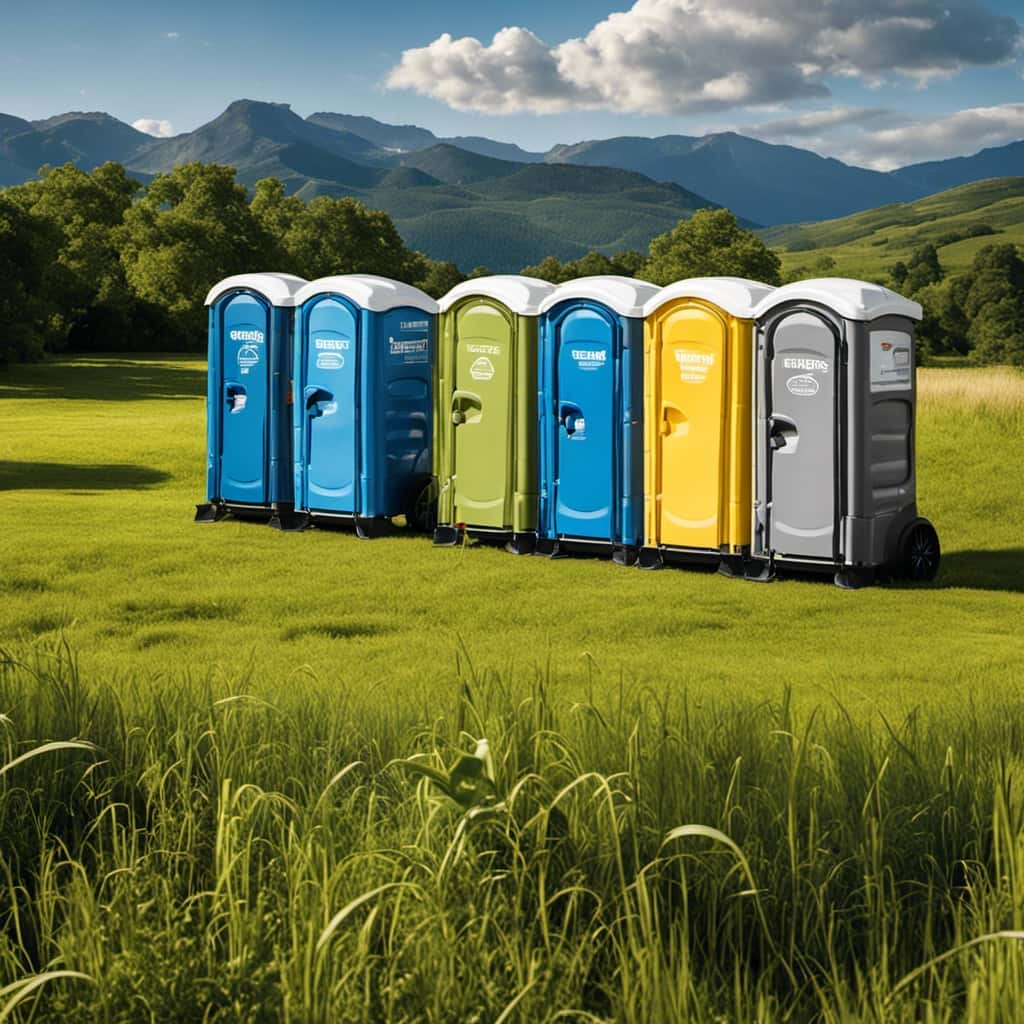
However, fill valve issues can arise, leading to problems such as slow filling or constant running of the toilet. To troubleshoot fill valve issues, start by checking the water supply to ensure it’s fully open. Next, inspect the fill valve for any signs of damage or debris that may be obstructing the flow. Additionally, adjusting the fill valve’s float height can help resolve issues related to water level.
Regular toilet tank maintenance, including periodic cleaning and inspection of the fill valve, is essential to prevent potential problems and ensure efficient water flow.
Flapper
To continue our discussion on the various components of the toilet tank, another important piece is the flapper.
The flapper is a rubber valve that’s responsible for controlling the flow of water from the tank into the toilet bowl. It’s connected to a chain or rod, which is attached to the toilet handle. When the handle is pressed, it lifts the flapper, allowing water to flow into the bowl.

Proper toilet tank maintenance includes ensuring that the flapper is functioning correctly. Common flapper problems include leaks and malfunctions, which can lead to water wastage and an inefficient flush.
Regularly inspecting and replacing the flapper when necessary can help prevent these issues and keep your toilet functioning properly.
Flush Handle
Continuing our exploration of the various components of the toilet tank, let’s now focus on the flush handle, which plays a crucial role in initiating the flushing process.
The flush handle is the lever that you push or pull to activate the flush mechanism. Here are some key points to consider about the flush handle:
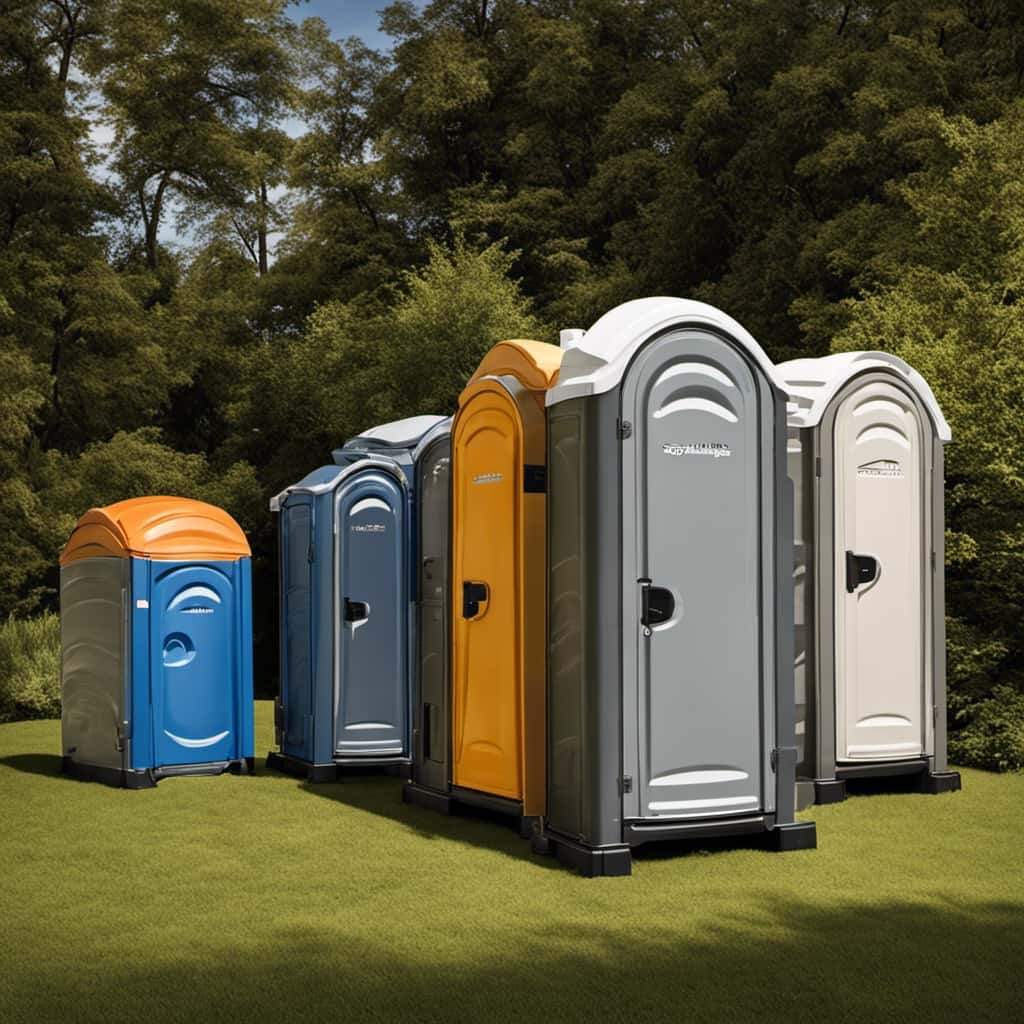
- Proper toilet tank maintenance is essential for the smooth functioning of the flush handle.
- Regularly inspect the handle for any signs of damage or wear.
- Clean the handle periodically to prevent dirt and grime buildup.
Troubleshooting flush handle issues:
- If the handle feels loose or wobbly, it may need to be tightened or replaced.
- If the handle gets stuck or doesn’t return to its original position after flushing, there may be an issue with the flush mechanism that needs to be addressed.
With a good understanding of the flush handle and its maintenance requirements, let’s now move on to discussing the overflow tube and its significance in the toilet tank.
Overflow Tube
Let’s now delve into the importance of the overflow tube in the toilet tank.
The overflow tube is a crucial component of the toilet tank that helps prevent water from overflowing onto the bathroom floor. Its purpose is to provide an outlet for excess water when the water level in the tank rises too high. This is particularly important for toilet tank maintenance, as a malfunctioning overflow tube can lead to water damage and costly repairs.
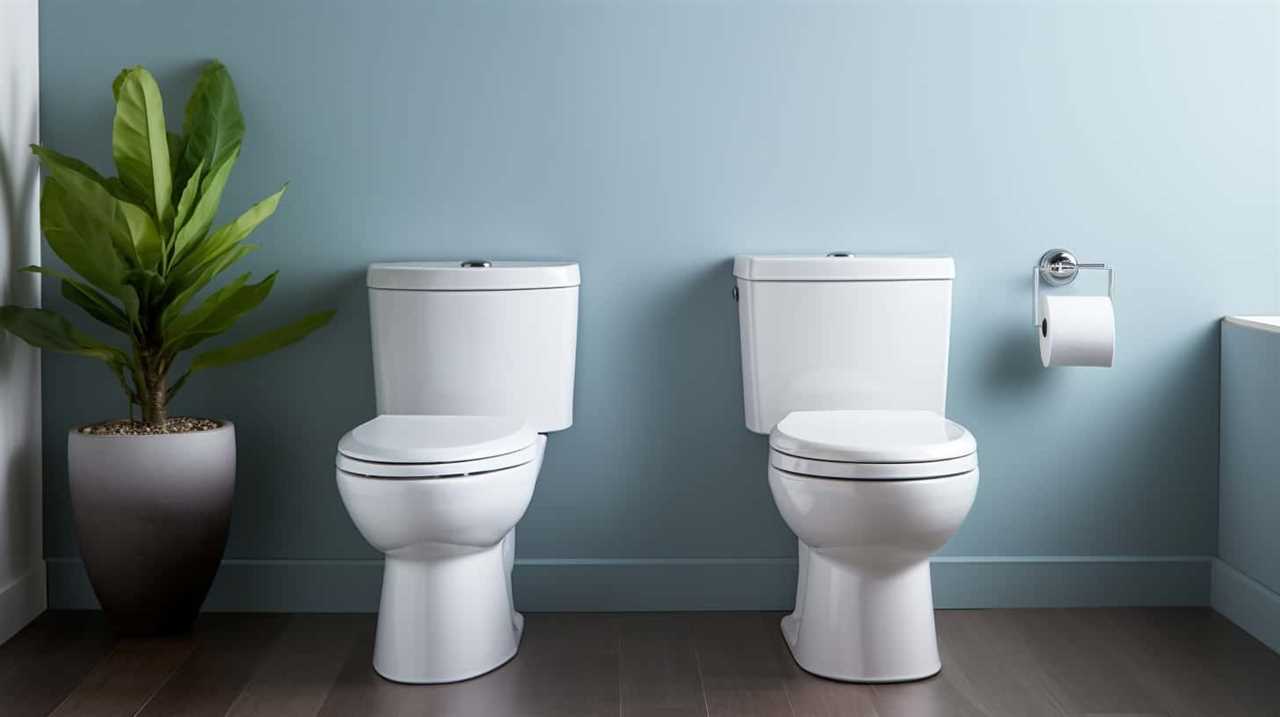
Troubleshooting the overflow tube involves checking for any blockages or leaks that may be impeding its function. Regularly inspecting and cleaning the overflow tube can help ensure proper functioning and prevent potential issues.
Now, let’s move on to the next section, where we’ll discuss the float valve and its role in maintaining the water level in the tank.
Float Valve
One important piece in the toilet tank is the float valve, which helps regulate the water level. The float valve plays a crucial role in toilet tank maintenance and can sometimes cause issues that need troubleshooting. Here are some key points to consider:
- Common problems with the float valve include:
- The valve not shutting off completely, leading to continuous water flow.
- The valve not opening fully, resulting in inadequate water filling.
- To troubleshoot float valve issues, you can:
- Adjust the float arm to ensure proper water level.
- Clean the valve and surrounding components to remove any debris.
- Replace the float valve if it’s damaged or worn out.
Understanding the float valve and its maintenance is essential for maintaining a properly functioning toilet. By addressing float valve issues promptly, you can prevent water wastage and ensure optimal performance.

Frequently Asked Questions
How Do I Know if My Fill Valve Needs to Be Replaced?
When troubleshooting common issues with toilet tank fill valves, it is important to know how to fix a leaking fill valve. If the valve is constantly running or not shutting off properly, it may need to be replaced.
Can I Adjust the Water Level in the Toilet Tank Using the Flapper?
Yes, we can adjust the water level in the toilet tank using the flapper mechanism. By adjusting the chain length connected to the flapper, we can control the amount of water that enters the tank after each flush.
What Should I Do if My Flush Handle Is Loose or Not Working Properly?
When a flush handle is loose or not working properly, there are a few steps we can take to fix it. First, we need to identify the problem and then follow the appropriate troubleshooting techniques to resolve it.
Is It Possible to Replace the Overflow Tube Without Removing the Entire Toilet Tank?
Yes, it is possible to replace the overflow tube without removing the entire toilet tank. The overflow tube is one of the essential toilet tank parts, and it can be replaced independently if needed.

Why Is the Water Level in My Toilet Tank Too High or Too Low, Even Though the Float Valve Seems to Be Working Fine?
The water level in our toilet tank may be too high or too low due to a faulty float valve, a clogged fill valve, or an improperly adjusted float arm. Adjusting the float arm can help regulate the water level without replacing any parts.
Conclusion
In conclusion, the pieces in the toilet tank, such as the fill valve, flapper, flush handle, overflow tube, and float valve, work together seamlessly to ensure proper functioning of the toilet.
These components, like a well-orchestrated symphony, play their individual roles to regulate water flow and enable efficient flushing.
Without them, the toilet would be unable to operate effectively, just like a conductor-less orchestra producing dissonant sounds.

Therefore, understanding and maintaining these parts is essential for a smoothly running toilet system.
With an impeccable eye for detail and a passion for bathroom-related, Ava leads our editorial team gracefully and precisely.
Under her guidance, Best Modern Toilet has flourished as the go-to resource for modern bathroom enthusiasts. In her free time, you might find Ava exploring antique shops and looking for vintage bathroom fixtures to add to her collection.
Toilet Types
What to Do When Your Septic Is Backed up

Were you aware that more than 20% of households in the United States encounter septic backups annually?
If you’re facing this unpleasant situation, don’t worry – we’ve got you covered.
In this article, we’ll provide you with practical tips and solutions to help you deal with a backed-up septic system.
From immediate steps to take to DIY solutions and knowing when to call a professional, we’ll guide you towards resolving the issue and preventing future backups.

Let’s get started!
Key Takeaways
- Promptly call a professional septic tank maintenance company to address the issue.
- Limit water usage to reduce strain on the system and prevent further complications.
- Avoid using drains connected to the backed-up septic to prevent additional damage and minimize the risk of overflow.
- Attempt DIY solutions such as plunging, pouring boiling water, or using baking soda and vinegar before calling a professional, but be aware that these may only provide temporary fixes.
Signs of a Backed-Up Septic
One of the first signs that we may have a backed-up septic is when there’s a foul odor coming from our drains and toilets. This unpleasant smell is often caused by a buildup of waste materials in the septic tank, which can occur due to various reasons.
Common causes of a backed-up septic include excessive water usage, improper disposal of non-biodegradable items, and lack of regular maintenance. It’s important to address this issue promptly, as a backed-up septic can pose health risks to both humans and the environment.
Harmful bacteria, viruses, and other pathogens can contaminate the water supply, leading to illnesses such as gastroenteritis and hepatitis. Therefore, taking immediate steps to resolve the problem is crucial in order to prevent further complications and ensure the well-being of everyone involved.

Immediate Steps to Take
To address a backed-up septic, we need to take immediate steps to prevent further complications and ensure the well-being of everyone involved. Here are three important actions to take as part of your emergency response:
- Call a professional: Contact a licensed septic tank maintenance company right away. They have the expertise and equipment to handle the situation safely and efficiently.
- Limit water usage: Until help arrives, reduce your water consumption as much as possible. This will help prevent additional strain on the septic system and minimize the risk of overflow.
- Avoid using the affected drains: It’s crucial to refrain from using any drains connected to the backed-up septic. This includes sinks, toilets, and showers. Using these drains can exacerbate the problem and lead to further damage.
DIY Solutions for Minor Backups
Now let’s explore our options for addressing minor backups ourselves. When it comes to minor septic backups, there are several home remedies and temporary fixes you can try before calling a professional. These solutions can help alleviate the issue temporarily, but keep in mind that they may not provide a permanent fix.
Here are a few DIY solutions you can consider:
| Solution | Description |
|---|---|
| Plunging | Use a plunger to create suction and dislodge the clog. Make sure to use a plunger specifically designed for toilets or drains. |
| Boiling Water | Pouring boiling water down the drain can help break down grease or organic matter that may be causing the backup. Be cautious not to use boiling water if you have PVC pipes, as it can damage them. |
| Baking Soda and Vinegar | Mix equal parts of baking soda and vinegar and pour it down the drain. Allow it to sit for a few hours before flushing with hot water. This combination can help break down clogs and eliminate odors. |
When to Call a Professional
If our DIY solutions for minor septic backups have failed, it’s time to reach out to a professional. While it’s important to attempt to resolve the issue on your own, there are times when the expertise of a professional is necessary.

Here are three situations when calling a professional is the best course of action:
- Persistent backups: If you’ve tried multiple DIY solutions and your septic system is still experiencing frequent backups, it’s time to call in a professional. They can identify the root cause of the problem and provide a long-lasting solution.
- Unpleasant odors: Foul smells emanating from your septic system can indicate a serious issue. A professional can conduct a thorough inspection to determine the source of the odor and address it effectively.
- Cost-effective solution: While professional services may come with a price tag, they can ultimately save you money in the long run. Ignoring septic issues or attempting ineffective fixes can lead to more extensive damage and higher repair costs. Investing in professional services ensures a proper diagnosis and resolution of the problem, minimizing the risk of further complications.
Preventing Future Backups
After addressing the immediate issue with a professional, we can take proactive steps to prevent future backups in our septic system.
Septic system maintenance is crucial for avoiding costly and unpleasant backups. Regularly pumping your septic tank every three to five years helps remove accumulated sludge and prevents it from clogging the system.
Additionally, be mindful of what goes down your drains and toilets. Avoid flushing non-biodegradable items, such as feminine products, wipes, and paper towels. These can accumulate in the septic tank and cause blockages.

It’s also important to minimize water usage and practice water conservation. Excessive water can overload the system and lead to backups.
Conclusion
In conclusion, when your septic is backed up, it’s essential to take immediate action. By recognizing the signs and following the appropriate steps, you can prevent further damage.
DIY solutions can be effective for minor backups, but don’t hesitate to call a professional if necessary. Remember, prevention is key to avoiding future backups. So, stay proactive and ensure your septic system is well-maintained to keep things flowing smoothly.
After all, a stitch in time saves nine!

With an impeccable eye for detail and a passion for bathroom-related, Ava leads our editorial team gracefully and precisely.
Under her guidance, Best Modern Toilet has flourished as the go-to resource for modern bathroom enthusiasts. In her free time, you might find Ava exploring antique shops and looking for vintage bathroom fixtures to add to her collection.
Toilet Types
How Much Water Does a Marine Toilet Use per Flush
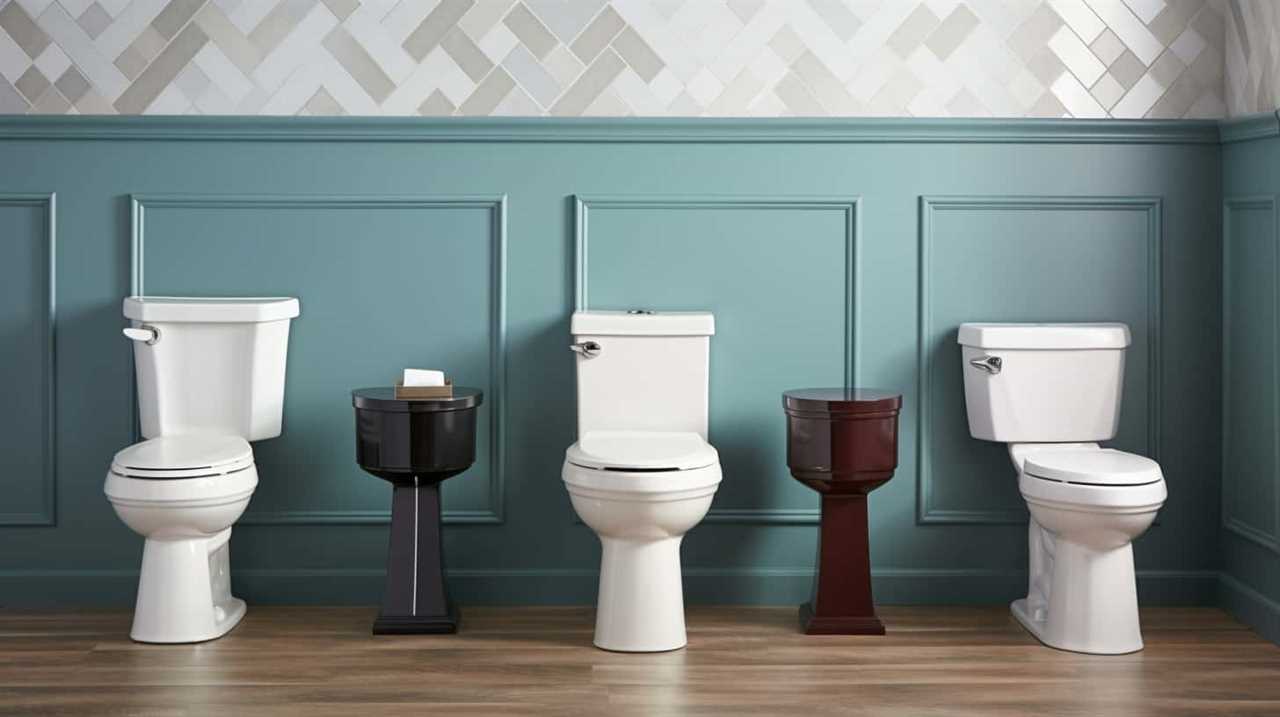
We’re all aware of the significance of water conservation, especially in regards to marine toilets. Have you ever thought about how much water these toilets consume with each flush? Get ready, because the answer might shock you.
In this article, we will dive into the factors affecting water usage in marine toilets, explore the average water consumption per flush, compare manual and electric marine toilets, and provide tips for reducing water usage.
Get ready to master the art of water efficiency in marine toilets!
Key Takeaways
- Marine toilets on average use approximately 1.5 gallons of water per flush.
- Water-saving techniques such as low-flow toilets and dual-flush systems can reduce water consumption.
- Manual toilets are less expensive and easier to repair and maintain compared to electric toilets.
- Installing water-saving devices and educating boaters about responsible water usage can help reduce water usage in marine toilets.
Factors Affecting Water Usage in Marine Toilets
We have identified several key factors that can significantly impact the amount of water used in marine toilets per flush. By implementing water-saving techniques, such as adjusting the water pressure and installing low-flow toilets, substantial reductions in water usage can be achieved.

Additionally, the environmental impact of water usage in marine toilets should be considered. Excessive water consumption can contribute to pollution and strain on water resources. To mitigate these effects, it’s essential to educate boaters about the importance of responsible water usage and the implementation of efficient toilet systems.
Incorporating features like dual-flush options and waterless urinals can further reduce water consumption. By adopting these measures, boaters can minimize their environmental footprint while still maintaining hygienic conditions on board.
Average Water Consumption per Flush
On average, marine toilets use approximately 1.5 gallons of water per flush. This water consumption may seem high, especially considering the impact of water scarcity. However, there are water-saving techniques that can be implemented to reduce the amount of water used by marine toilets. These techniques include using low-flow toilets, installing water-efficient flush valves, and adopting dual-flush systems that allow users to choose between a full flush and a partial flush. By implementing these water-saving techniques, the average water consumption per flush can be significantly reduced, helping to conserve water resources and minimize the impact on water scarcity.
| Water-saving technique | Description | Impact on water consumption |
|---|---|---|
| Low-flow toilets | These toilets are designed to use less water per flush, typically around 1.28 gallons or even less. | Reduced water consumption per flush. |
| Water-efficient flush valves | These valves are designed to optimize water usage, ensuring that only the necessary amount of water is used for each flush. | Reduced water wastage and improved efficiency. |
| Dual-flush systems | These systems offer users the option to choose between a full flush for solid waste and a partial flush for liquid waste. | Allows users to conserve water by selecting the appropriate flush option. |
Comparison of Manual Vs. Electric Marine Toilets
When comparing manual and electric marine toilets, it’s important to consider the differences in functionality and water consumption. Here are some key points to consider:
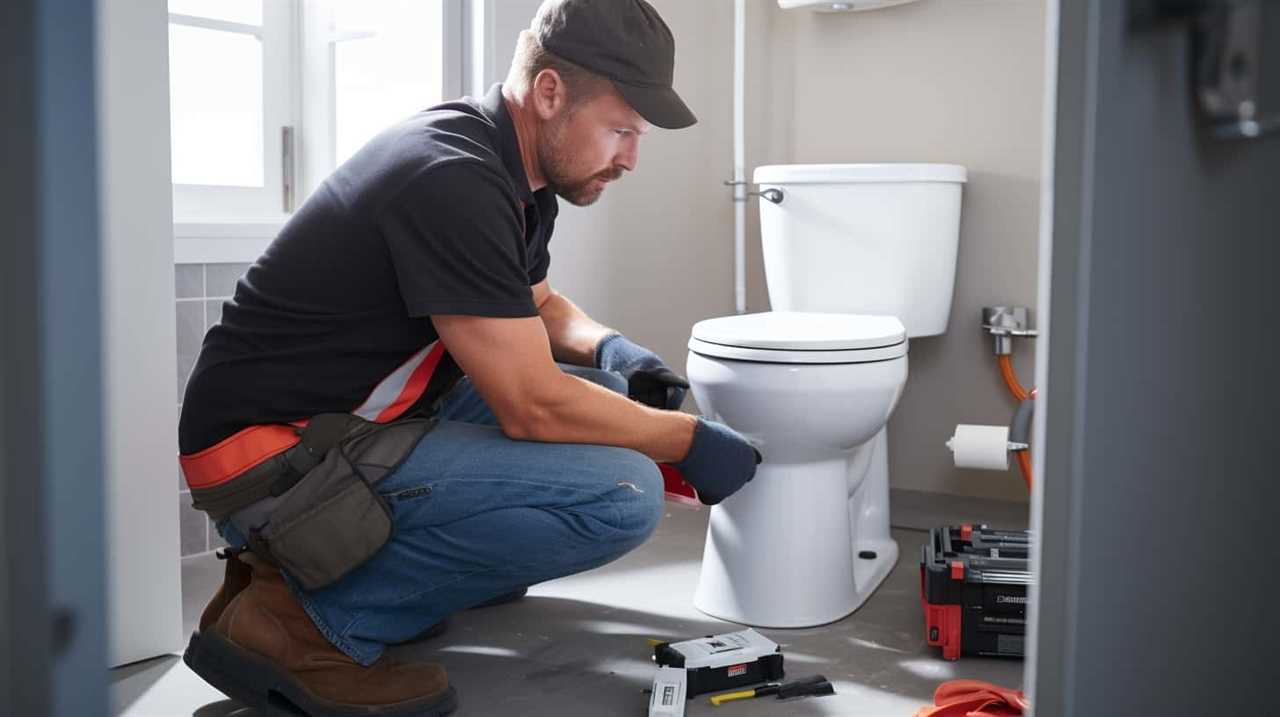
- Pros and cons of manual vs. electric marine toilets:
- Manual toilets are generally less expensive and simpler in design, making them easier to repair and maintain.
- Electric toilets provide a more convenient and comfortable experience as they’ve automated flushing and waste disposal systems.
Differences in installation and maintenance between manual and electric marine toilets:
- Manual toilets require a hand pump or lever to flush, while electric toilets use a motor to flush.
- Manual toilets have fewer components and are easier to install and maintain.
- Electric toilets require an electrical connection and may need professional installation and periodic maintenance.
Considering these factors will help you make an informed decision when choosing between a manual and electric marine toilet.
Tips for Reducing Water Usage in Marine Toilets
Our top tip for reducing water usage in marine toilets is to adjust the water level setting to a lower position. By doing so, you can significantly reduce the amount of water used per flush.
Another tip for maintaining marine toilets and saving costs is to avoid using excessive amounts of toilet paper. Excess toilet paper can lead to clogs and require more water for flushing.

Additionally, regular maintenance and inspection of marine toilets can help detect and fix any leaks or malfunctions, preventing unnecessary water wastage.
Installing a water-saving device, such as a dual flush system or a low-flow toilet, can also contribute to water conservation.
Innovative Technologies for Water-Efficient Marine Toilets
To achieve water efficiency in marine toilets, we can explore innovative technologies that provide effective flushing while conserving water. Smart toilets and eco-friendly toilet designs are at the forefront of these advancements.
Here are five innovative technologies that can make marine toilets more water-efficient:
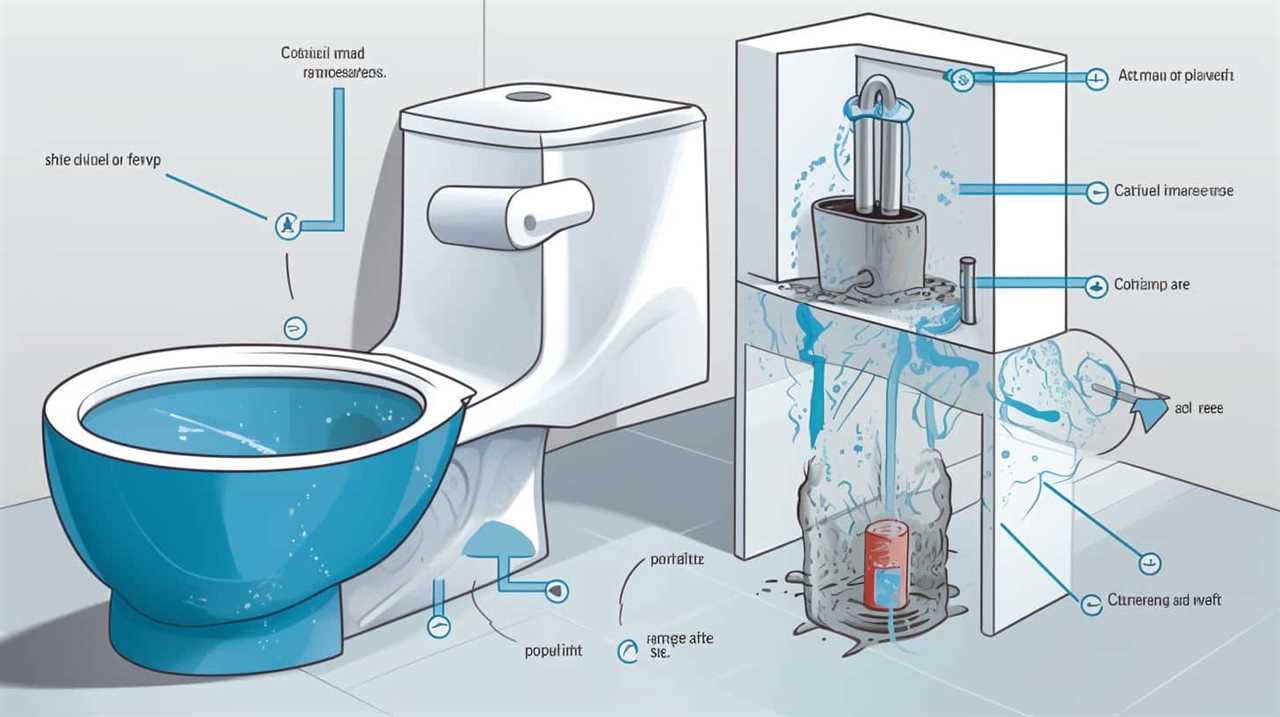
- Dual-flush systems: These toilets have two buttons or levers that allow users to choose between a full flush for solid waste and a half flush for liquid waste.
- Vacuum-assisted toilets: These toilets use a vacuum to remove waste, requiring less water for flushing.
- Composting toilets: These toilets convert waste into compost, eliminating the need for water altogether.
- Waterless urinals: These urinals use a special trap that allows urine to pass through without using any water.
- Greywater recycling systems: These systems collect and treat wastewater from sinks, showers, and laundry, then reuse it for flushing toilets.
Frequently Asked Questions
Can Marine Toilets Be Converted to Use Recycled Water Instead of Freshwater?
Yes, marine toilets can be converted to use recycled water instead of freshwater. By using recycled water, we can conserve freshwater resources and reduce waste. This conversion offers environmental benefits and promotes sustainability in marine environments.
What Are Some Common Maintenance Issues That Can Lead to Excessive Water Usage in Marine Toilets?
Toilet maintenance is crucial to avoid excessive water usage. Common issues like leaky seals or faulty valves can lead to significant water wastage. Regular inspections and repairs are necessary to ensure efficient water usage.
Are There Any Regulations or Guidelines Regarding Water Usage in Marine Toilets?
There are regulations on marine toilet water usage that aim to limit the potential environmental impact. Compliance with these regulations is important to ensure responsible water usage and protect our marine ecosystems.
Can Marine Toilets Be Retrofitted With Water-Saving Devices?
Yes, marine toilets can be retrofitted with water-saving devices. These devices help reduce water consumption per flush, leading to significant water savings. Retrofitting marine toilets with such devices is a beneficial practice for conserving water.

How Does the Type of Toilet Paper Used Affect Water Usage in Marine Toilets?
The type of toilet paper used can impact water usage in marine toilets. Water-saving devices can reduce water usage in marine toilets. Both factors should be considered for efficient water management on boats.
Conclusion
In conclusion, it’s important to consider the water usage in marine toilets to minimize environmental impact. By understanding the factors affecting water consumption and choosing the right type of toilet, such as electric or manual, boaters can make a significant difference.
Implementing tips for reducing water usage and exploring innovative technologies can further enhance water efficiency.
Let’s strive for a sustainable marine environment by being mindful of our water consumption in marine toilets.

With an impeccable eye for detail and a passion for bathroom-related, Ava leads our editorial team gracefully and precisely.
Under her guidance, Best Modern Toilet has flourished as the go-to resource for modern bathroom enthusiasts. In her free time, you might find Ava exploring antique shops and looking for vintage bathroom fixtures to add to her collection.
Toilet Types
What Do They Do With Used Toilet Paper in Greece

Did you know that Greece, a country renowned for its ancient history and breathtaking scenery, encounters distinct challenges in waste management?
One particular concern is what happens to used toilet paper. In this article, we will delve into the practices and techniques employed in Greece for handling and disposing of this everyday waste.
By exploring recycling facilities, composting methods, and sewage treatment, we aim to provide a comprehensive understanding of the environmental impact and sustainable solutions in Greece.
Key Takeaways
- Waste management practices in Greece include comprehensive systems for disposal and recycling.
- Recycling facilities play a crucial role in enhancing waste management practices and reducing environmental impact.
- Composting techniques, such as vermicomposting and anaerobic digestion, are used to minimize waste and contribute to a sustainable future.
- Sustainable wastewater management is important for preserving water quality, protecting biodiversity, and safeguarding public health.
Waste Management Practices
In Greece, our waste management practices involve a comprehensive system for the proper disposal and recycling of various materials, including used toilet paper. Our country recognizes the importance of waste reduction strategies and the need for landfill alternatives to minimize environmental impact.

One of the key waste reduction strategies we employ is the separation of recyclable materials at the source. This allows for the efficient recycling of paper products, including used toilet paper.
Additionally, we’ve implemented innovative technologies such as waste-to-energy plants, which convert non-recyclable waste into energy. These landfill alternatives help reduce the amount of waste that ends up in landfills, ultimately preserving our natural resources.
As we move forward, it’s crucial to further invest in recycling facilities to enhance our waste management practices and promote a sustainable future.
Recycling Facilities
We have established efficient recycling facilities in Greece to handle various materials, including used toilet paper. Our toilet paper recycling process is a crucial part of our waste disposal methods, as it helps us reduce waste and minimize environmental impact.
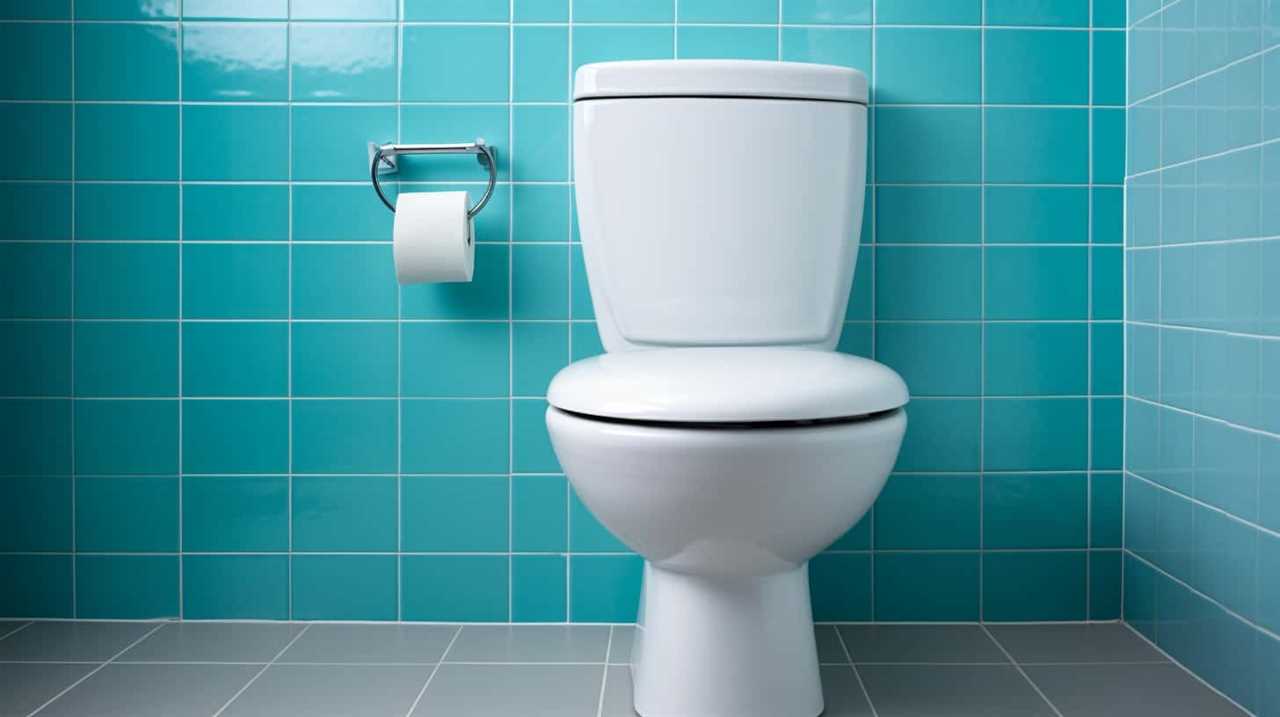
Here are three key aspects of our recycling facilities:
- Advanced Sorting Technology: Our recycling facilities employ advanced sorting technology to separate different types of waste, including used toilet paper. This technology ensures that the recycling process is efficient and effective, allowing us to maximize the amount of waste that can be recycled.
- Comprehensive Treatment Process: Once the used toilet paper is sorted, it undergoes a comprehensive treatment process. This process involves cleaning, sanitizing, and transforming the paper fibers into new products or materials. By treating the used toilet paper properly, we can ensure that it’s recycled in a safe and environmentally friendly manner.
- Collaborative Partnerships: We’ve established partnerships with various organizations and businesses to facilitate the recycling of used toilet paper. These partnerships enable us to collect and transport large quantities of used toilet paper to our recycling facilities, ensuring a steady supply of materials for recycling.
Composting Techniques
Continuing the discussion on recycling facilities, our efficient composting techniques in Greece play a vital role in further reducing waste and promoting environmental sustainability. Through the use of vermicomposting and anaerobic digestion, we are able to convert organic waste into nutrient-rich compost and renewable energy.
Vermicomposting involves the use of earthworms to break down organic materials such as food scraps and yard waste. These worms consume the waste and produce nutrient-rich castings, which can be used as a natural fertilizer for plants. This process not only reduces the amount of waste going to landfills but also improves soil health and fertility.
On the other hand, anaerobic digestion is a process that occurs in the absence of oxygen. It involves the decomposition of organic waste by microorganisms, which produces biogas as a byproduct. This biogas can be captured and used as a renewable energy source, reducing the reliance on fossil fuels.

By implementing these composting techniques, we are able to minimize waste, produce valuable resources, and contribute to a more sustainable future.
| Composting Technique | Benefits |
|---|---|
| Vermicomposting | – Reduces waste going to landfills |
- Improves soil health and fertility |
| Anaerobic digestion | – Produces renewable energy - Reduces reliance on fossil fuels |
Sewage Treatment Methods
Our efficient composting techniques in Greece play a vital role in further reducing waste and promoting environmental sustainability.
Now let’s explore the sewage treatment methods that are implemented in our country. These methods are carefully designed to ensure the safe disposal and treatment of wastewater.
- Anaerobic digestion: This process involves the breakdown of organic matter in the absence of oxygen. It’s an effective method for treating sewage as it produces biogas, a valuable source of renewable energy.
- Chemical disinfection: After the sewage is treated through various biological processes, chemical disinfection is used to eliminate any remaining pathogens. This ensures that the treated water is safe to be discharged into the environment or reused for irrigation purposes.
- Advanced filtration: In addition to anaerobic digestion and chemical disinfection, advanced filtration techniques are employed to remove any remaining impurities from the treated water. This ensures that the water meets the highest quality standards before being released back into the environment.
Environmental Impact Assessment
One important aspect of managing wastewater in Greece is conducting an environmental impact assessment to evaluate the potential effects on the surrounding ecosystem. This assessment is crucial in understanding the impact on local communities and identifying alternative disposal methods that are more environmentally sustainable.

By assessing the potential consequences of wastewater treatment and disposal, policymakers and environmental experts can make informed decisions to minimize negative impacts and protect the local ecosystem. The assessment takes into account factors such as water quality, biodiversity, and the overall health of the ecosystem. It also considers the potential effects on human health and well-being.
Frequently Asked Questions
How Does Greece Manage the Disposal of Used Toilet Paper in Public Restrooms and Other Non-Residential Areas?
In managing the disposal of used toilet paper in public restrooms and non-residential areas, Greece employs various management practices. These practices are designed to maintain public health and ensure proper waste disposal.
Are There Any Specific Guidelines or Regulations in Greece Regarding the Proper Disposal of Used Toilet Paper?
Proper disposal guidelines and regulations in Greece ensure the environmentally-friendly management of used toilet paper. Improper disposal can have a detrimental impact on the environment, emphasizing the importance of following these guidelines.
What Measures Are Taken in Greece to Ensure That Used Toilet Paper Is Disposed of Safely and Hygienically?
In Greece, safe disposal methods and hygienic disposal practices are implemented to ensure that used toilet paper is properly managed. These measures prioritize cleanliness and sanitation for the well-being of individuals and the environment.

Are There Any Alternative Methods or Technologies Being Explored in Greece for the Eco-Friendly Disposal of Used Toilet Paper?
In Greece, we are exploring alternative methods and eco-friendly technologies for the disposal of used toilet paper. These measures aim to minimize environmental impact and promote sustainability in waste management practices.
How Does the Disposal of Used Toilet Paper in Greece Compare to Other European Countries in Terms of Environmental Impact?
In terms of environmental impact, how does the disposal of used toilet paper in Greece compare to other European countries? We analyzed recycling initiatives and found that Greece lags behind in implementing sustainable solutions.
Conclusion
In Greece, waste management practices, recycling facilities, composting techniques, and sewage treatment methods are implemented to deal with used toilet paper. These measures aim to minimize environmental impact and ensure sustainable practices.
By utilizing these methods, Greece demonstrates a commitment to responsible waste disposal and resource conservation. Through careful analysis and evidence-based approaches, the country is able to effectively manage used toilet paper, contributing to a cleaner and healthier environment for all.

With an impeccable eye for detail and a passion for bathroom-related, Ava leads our editorial team gracefully and precisely.
Under her guidance, Best Modern Toilet has flourished as the go-to resource for modern bathroom enthusiasts. In her free time, you might find Ava exploring antique shops and looking for vintage bathroom fixtures to add to her collection.
-

 Bathroom Enhancements2 months ago
Bathroom Enhancements2 months agoWill Hot Bath Lower Blood Pressure
-

 FAQ - Advanced Bathroom Queries3 months ago
FAQ - Advanced Bathroom Queries3 months agoWhich Countries Use Bidets the Most
-

 Reviews1 month ago
Reviews1 month agoLDian Smart Toilet Review [2024]
-

 Reviews2 months ago
Reviews2 months agoKohler Innate Smart Toilet Review [2024]
-

 Reviews2 months ago
Reviews2 months agoKohler NUMI 2.0 Smart Toilet Review [2024]
-

 Reviews2 months ago
Reviews2 months agoCANEST Smart Toilet Review: The Ultimate Bathroom Upgrade [2024]
-

 Toilet Types3 months ago
Toilet Types3 months agoAre Bleach Tablets Bad for Your Toilet
-

 Reviews2 months ago
Reviews2 months agoWoodbridge B0970S Smart Bidet Toilet Review [2024]






















